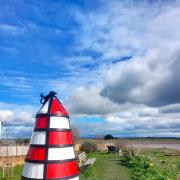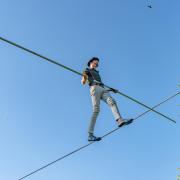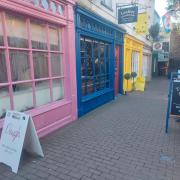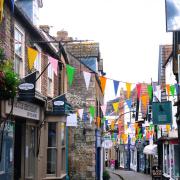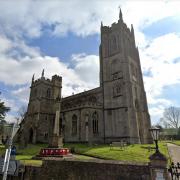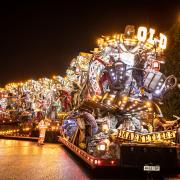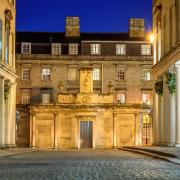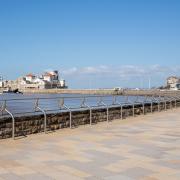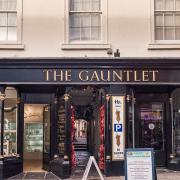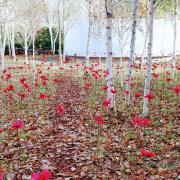The city of Wells relies heavily on tourism to support its economy, but a strong community is rising to the challenge of coronavirus, as the Dean of Wells Cathedral tells CATHERINE COURTENAY

This year has seen a momentous event in the history of Wells – the cathedral closing its doors to the public. It is as a result of the coronavirus pandemic and it is only the third time this has happened since the cathedral was built, nearly 850 years ago. The cathedral normally welcomes around 300,000 visitors a year and Holy Week, the run-up to Easter, is the most important time in the Christian calendar. This year, within a fortnight, all plans for the week were turned on their head and cathedral staff had to reinvent centuries of tradition. Everything went online – from the services and music to the pastoral care. The cathedral’s reach went far, across the city and the county - and even globally, when a group of choral scholars sang a piece by Gerald Finzi from the front garden of their shared home in Vicar’s Close. It was filmed by a neighbour, put on social media and went viral.
It’s just days before Easter when I speak to the Very Revd Dr John Davies, the Dean of Wells. I ask him about the closure of the cathedral.
“Initially some people were a bit shocked, but I think the huge majority have got the point that it is about safety. Coronavirus is a killer and we have to find a whole new way of living just for now, and the closure of the cathedral has to be part of that.
“We thought ‘Ok, so… how do we offer worship? How can we offer a pastoral link? How can we offer music? How can we offer things to reflect on? How can we show people what the cathedral is about when they are not coming to us’?... We go to them.”

He says that since the cathedral closure there has been a 400 per cent increase in connection on some of its social media channels – the choral scholars bringing in a huge boost.
“Music is one of the great draws here, it always has been and therefore it’s not a surprise to me that when our choral scholars do a thing in their front garden, that’s the thing that’s gone viral, that’s the thing the greatest number of people have latched on to; it’s the haunting beauty of music and the sense that even though the building is closed, the musicians have not stopped producing music.”
The Dean emphasises that this is Somerset’s cathedral, there is a responsibility to the whole county; but there is of course a natural connection to Wells itself.
“One of the things we really have been trying to do in the past few years, since I’ve been here, is connect the cathedral much more strongly with the city and with the county,” he says.

Numbers coming into the cathedral have grown since inviting local charities and groups and forging connections with the community. Offering to stage a Wake Up Wells event in the cathedral brought 2,000 local people into the building. “There were stalls for every organisation you can think of,” says the Dean. “It was fabulous.”
Visitors flock to Wells for its heritage, the cathedral with the Bishop’s Palace and gardens are stunning, and nationally important treasures. It is also home to Wells Cathedral School, an independent school which is also a music specialist school. Bursaries are available for choristers from the cathedral, who all attend the school.
“Two things that draw people to Wells are the beauty of the cathedral and its immediate environment and the beauty of the music,” says the Dean. “This is world class music and we are very lucky to have the cathedral school.”
Studies have shown that more people are visiting cathedrals and even if their initial reason has been to look at the history of the building, they often take away a different experience, reporting that, ‘I’ve never said a prayer in a decade’, or ‘I’ve never known where to remember someone who’s died’, or ‘I’ve never felt I can just sit and be still for a minute’.
The Dean says: “One of our things is to show people, in a simple and non-bossy way, what a cathedral is about and people pick it up instinctively, they just kind of ‘get it’; they hear the choir, or see a candle to light, or a day chaplain saying the prayers, and people are affected by all that, they just sort of pick some of it up and take it with them.”
The cathedral, he says, “has come through an amazing variety of experiences. It’s been here for nearly 850 years and seen war and violence and plague and pillage and through it all it’s been a sign of stability and continuity – it’s a bit like a monarchy or something, the cathedral just goes on.”
Reflecting on the unusual circumstances for Easter 2020 he says: “My mind goes back to the earliest account of Holy Week in the New Testament and in that period people were in lockdown - especially at the time of the crucifixion; they were isolated and fearful and living with quite high levels of angst. And here we are again, where it feels to me very much like the first Holy Week.
“The great thing that the cathedral stands for, has stood for and will stand for, is the gift of hope. And that is what the cathedral is trying to embody in giving out all this [online] material - to say there is hope and we will come through this.”






